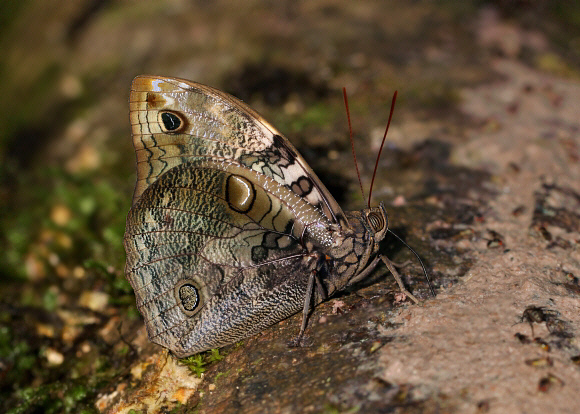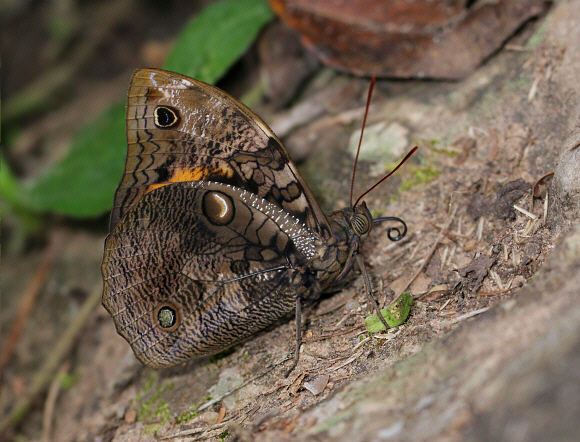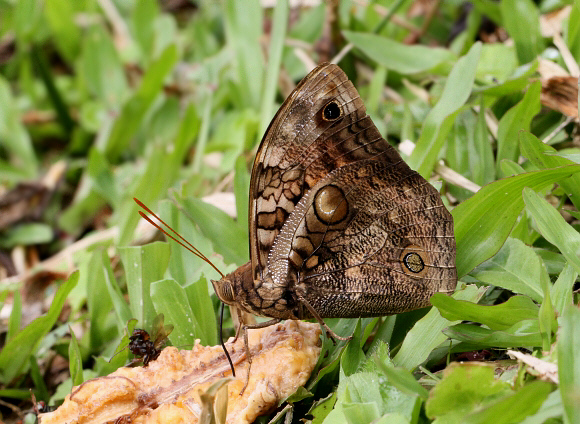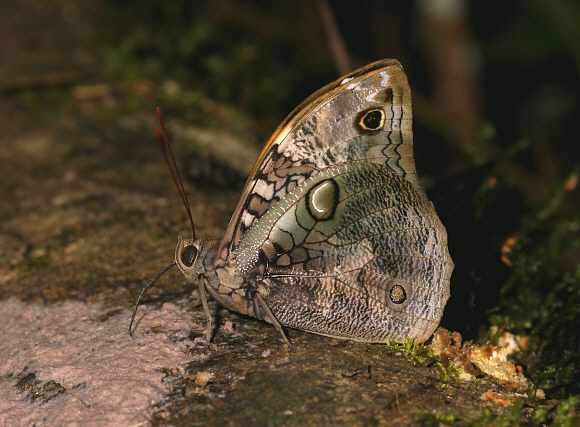
Introduction
The Morphinae comprises about 140-150 neotropical species, of which 93 are included within the tribe Brassolini. Of these, 73 are placed in the Brassolina – a subtribe including the genera Brassolis, Blepolenis, Caligo, Caligopsis, Catoblepia, Dasyophthalma, Dynastor, Mielkella, Eryphanis, Penetes, Mimoblepia, Opoptera, Opsiphanes, Orobrassolis, and Selenophanes. All Brassolines are crepuscular or nocturnal in behavior, although a few species also fly by day in the darkest areas of the forest.
The genus Opsiphanes comprises of 11 species distributed variously from Mexico to Paraguay and Argentina. The butterflies are characterized by having a stout thorax and abdomen, large eyes, and sturdy antennae. The costa is strongly curved, and the forewing termen is slightly concave. In all species, the upperside wings are dark brown in color with a diagonal orange or yellowish band on the forewings. The undersides are an earthy brown hue. There are dark striations on the outer half of the wings, and heavy marbling at the base. On the hindwings, there is a prominent ocellus within which there is a white crescent, and there is a smaller almost circular ocellus near the tornus.
Opsiphanes invirae occurs in Central America from Honduras to Panama. In South America, it occurs east of the Andes from Colombia to Paraguay. There are 13 named subspecies.

Habitats
This species is found in primary and secondary rainforest, at altitudes up to about 1000m.
Lifecycle
The egg is globular, and is laid singly, typically on the stems or dead leaf blades of the food plants, which include Cocos eriospatha, Livistona australia, L.rotundifolia, and Arecastrum romanzoffianum, (Arecaceae). The caterpillar feeds nocturnally. When fully grown it is yellow-green with dark green and reddish lateral and dorsal lines. The head is dark green and has 4 short backward projecting reddish horns. The larvae are parasitized by the Braconid wasp Apanteles biezankoi. The chrysalis is light green, marked with gold spots on the sides.

Adult behavior
Opsiphanes fly mainly at dusk and dawn. They are usually encountered in two’s and three’s in the company of Eryphanis, Selenophanes, Narope, Prepona, and Memphis species, feeding at rotting fruit on the forest floor. They also feed at decomposing fruit in the canopy, and occasionally at peccary dung or urine.

